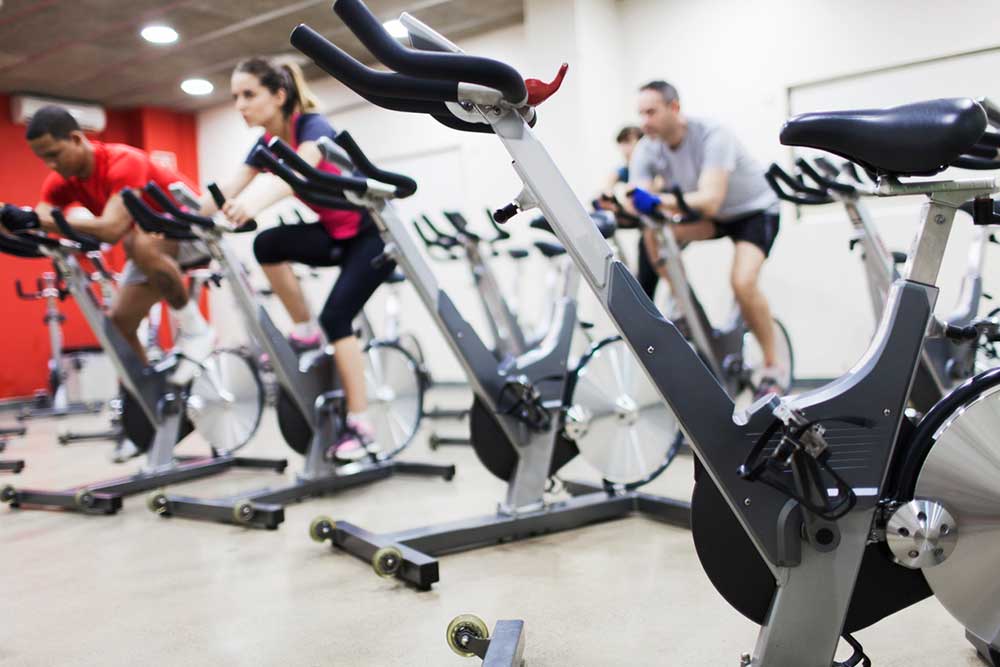Parkinson’s Disease & Cycling Benefits

Catherine O’Brien
 Parkinson’s Disease (PD) is a disease of the nervous system that is characterized by impaired motor function. This impairment can manifest in various ways including tremor, bradykinesia (slowed movement), rigid muscles, impaired posture, loss of automatic movement and impairment of speech and writing ability (Mayo Clinic, 2015). According to the Parkinson’s Disease Foundation, there are approximately 60,000 American’s diagnosed with the disease every year. Incidence of Parkinson’s Disease increases with age and men are about 1.5x more likely than women to develop the disease (Parkinson’s Disease Foundation, 2017).
Parkinson’s Disease (PD) is a disease of the nervous system that is characterized by impaired motor function. This impairment can manifest in various ways including tremor, bradykinesia (slowed movement), rigid muscles, impaired posture, loss of automatic movement and impairment of speech and writing ability (Mayo Clinic, 2015). According to the Parkinson’s Disease Foundation, there are approximately 60,000 American’s diagnosed with the disease every year. Incidence of Parkinson’s Disease increases with age and men are about 1.5x more likely than women to develop the disease (Parkinson’s Disease Foundation, 2017).
While Parkinson’s Disease is most commonly associated with motor impairments, research suggests that cognitive abilities are also impaired among individuals with the disease. As such, Parkinson’s Disease has become relevant in psychological and neuroscience research.
The Study
We know that aerobic exercise has the potential to improve cognitive functioning so it is not a surprise that exercise interventions are being investigated in relation to Parkinson’s disease. Today I am excited to discuss a recent study on dual (motor-cognitive) task functioning in patients with Parkinson’s disease. Performing a motor task (e.g. walking, cycling) at the same time as a cognitive task can lead to interference such that performance on cognitive tasks can be impaired (e.g. slower response time). Not surprisingly, research suggests that individuals with Parkinson’s disease experience greater interference during dual task than their healthy counter parts.
According to Hazamy et al. (2017) this exaggerated interference has been attributed to limitations in cognitive resources. However, this debilitation could be due to the type of motor task given. Previous research on dual task interference has used walking or balance based motor tasks which are abilities commonly impaired by Parkinson’s disease. It is possible that PD individuals suffer greater interference in these dual task situations because they are focusing too heavily on the challenges of the motor aspect which then leads to decreased cognitive ability.
In order to combat this, the present research utilized cycling as opposed to walking / balancing because individuals with Parkinson’s disease are typically able to cycle without difficulty or impairment. Given this, Hazamy et al (2017) were interested in whether persons with PD would experience greater interference during a cycling task compared to healthy older adults. Overall, they were also interested in whether cycling would help or hinder cognitive abilities in both healthy and PD populations.
The Participants
Participants were older individuals with Parkinson’s disease (PD) and healthy older adults (HOA).
Cognitive tasks assessed speed of processing, controlled processing, working memory and executive function. Participants completed the cognitive tasks while on a stationary bike and were instructed to cycle at a comfortable pace throughout the test. They were instructed to not cycle in between tasks or while the researcher was explaining instructions so that they would only be cycling during test administration. Participants were given ample time to rest between tasks. Each participant completed a single task control condition in which they performed the cognitive tasks in a quiet room (no cycling). In this way, each participant engaged in a dual task (cycling + cognitive tasks) and single task condition (cognitive tasks). The order in which participants completed the dual and single task conditions was randomized in order to minimize the effects of practice.
Consistent with previous research, the results demonstrated that participants with Parkinson’s disease performed worse than their healthy older adult counterparts on cognitive tasks measuring controlled processing, working memory, and executive function.
Interestingly, however, both healthy older adults and participants with Parkinson’s disease experienced dual task facilitation, rather than interference, during cognitive tasks. This means that both groups experienced an improvement in performance on cognitive tasks when they completed the tasks on the stationary bike (dual task) compared to when they completed the tasks while seated (single task). It is important to point out that the main improvement was observed for reaction time. This finding demonstrated that both healthy and Parkinson’s participants were able to benefit from the facilitating effects of cycling.
Exciting Takeaway
While the research is still very new, the results of this study are exciting because they provide evidence that cycling can have the same beneficial cognitive effects for individuals with Parkinson’s disease as they do for healthy individuals. They key to this study was utilizing an exercise method that would not be problematic for Parkinson’s patients the way walking or balancing exercises have been in the past.
Future research should continue to investigate stationary cycling and other methods of exercise that may be beneficial to patients with Parkinson’s disease in improving cognitive ability.
References
Hazamy, A.A., Altmann, L., Stegemoller, E., Bowers, D., Lee, H.K., Wilson, J., Okun, M.S., and
Hass, C.J. (2017). Improved cognition while cycling in Parkinson’s disease patients and
healthy adults. Brain and Cognition, 113, 23-31.
The Mayo Clinic (2015) Parkinson’s disease: Symptoms. Retrieved April 12, 2017, from
http://www.mayoclinic.org/diseases-conditions/parkinsons-disease/basics/symptoms/con-20028488
Parkinson’s Disease Foundation (2017) Statistics on Parkinson’s. Retrieved April 12,2017 from
http://www.pdf.org/parkinson_statistics
You Might Like:















